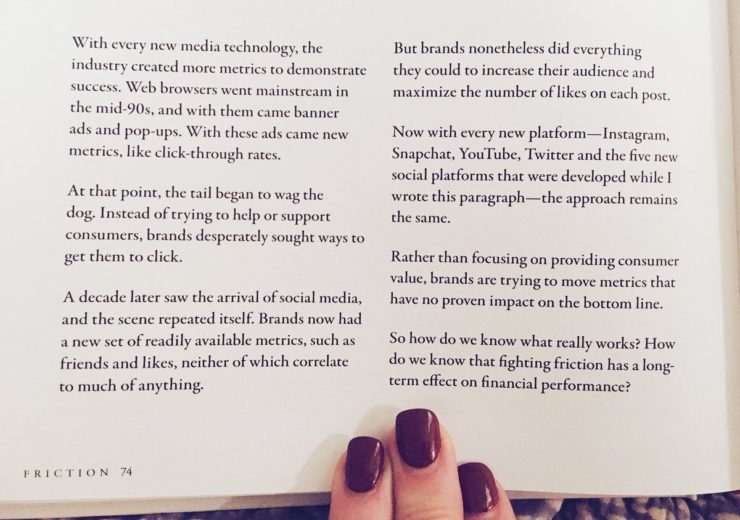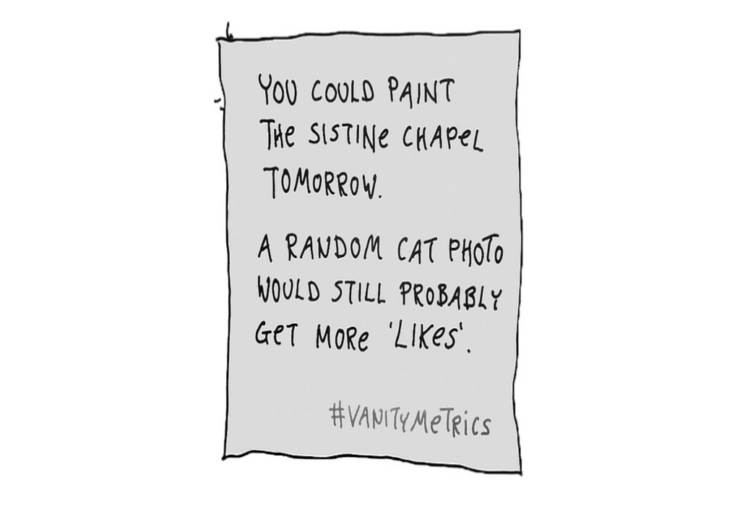With the Game of Thrones phenomenon taking the world and internet by storm, it’s brought back a lot of thoughts and questions around the idea of FOMO. How and when should brands activate around moments and trends? What makes one brand jump in on a trend and hit it out of the park, while the next one looks completely desperate and thirsty?
It’s no secret that I have a serious disdain for brands that suffer from FOMO. Too often brands miss the mark versus get it right, and it distracts teams from the work that actually matters.
But, I think people misinterpret my disdain of FOMO with real-time marketing period. Real-time marketing is part of what we do, after all, our work does come to life on the internet. It’s important to have a pulse and understanding of the conversations happening. I would never discredit that. The key is that it has to be done right and with the big-picture in mind.
Ever since brands have realized they can dunk in the dark like Oreo, they have been trying to tweet, poke and post their way into virality. And, too often brands are willing to throw out their vision, their voice and their identity to jump on a trend. To put it simply, FOMO has become a big distraction for marketers. Here are my biggest issues with it, and more specifically, FOMO in sports:
Too many neglect their OWN brand.
From the outside looking in, it seems like most brands are focused more on trying to win the internet vs their own brand strategy. Because it’s easier than ever to activate, we’ve thrown out too many of the fundamentals that make a good marketing strategy. The result is a volume of content that is incredibly high, but it’s often pushed without much purpose and understanding of why.
We need more of an emphasis on “brand” in sports, not gimmicks. Right now there is little distinction between team A and team B beyond the scores. The result is a sea of sameness. Before jumping on an internet trend, teams need to nail their foundation. If a team, league or org does not know what their brand strategy looks like then anything related to real-time marketing is just a distraction, clutter and noise.
If you don’t know what your own brand stands for, then how can you provide a unique POV? We have to stop neglecting our own brands and sharp point for the sake of vanity metrics.
FOMO is not a strategy.
Too often it feels like people think that real-timing marketing is their saving grace to a great presence online. Real -time marketing is not a strategy though. It’s a tactic. A tool in the toolbox. It is something your team should be thinking about, but not obsessing about. If your team spends most of their working day trying to break the internet then there’s probably an issue at hand.
Does it move the needle?
In in a similar vein to the idea that FOMO is not a strategy, we also have to question how much it moves the needle. Yes, real-time marketing moments tend to get a good reaction, but too often the content is not core to a brand. If the content is barely relevant to a brands core, how much is it really moving the needle? It’s like this quote from one of my favorite marketing books Friction:

It’s important to remember that not all engagement is created equal. Hop on a pop culture meme, share a random animal video or throw snark someone’s way and you’re probably going to generate attention. Does that mean it’s right for the brand or is helping a team reach its goals? Not necessarily. This image sums it up perfectly:

Our jobs aren’t to win the internet. Our jobs are bring the brand to life and drive business results — which yes, requires capturing the right kind of attention. Your brand is stronger than the flavor of the day. It trumps pop culture GIFS, the meme of the week and every other vanity play.
The reality is leadership does not care about vanity metrics. They care about the actual impact on the business. For social to get its due, we have to be disciplined and strategic.
I’ll leave you with this Seth Godin quote from his latest book: Specific is a kind of bravery. In a world where our work is public and we’re all competitive, it’s easy to get caught up in the vanity plays and tactics. As marketers, we shouldn’t try to be everything to everyone. We should focus on the audience and the work that moves the needle. Define your North Star (your brand POV) and stick to it.
It’s hard to do it right.
Let’s face it. It’s hard to do real-time marketing right. Too often every brand has the same idea. This creates cluttered feeds with the same creative everywhere. Think about it. How many times can a brand jump on the picture of the throne for Game of Thrones? It’s simply not original anymore. Originality, that is relevant, is hard to do right.
If you are looking for an example of how an original play, check out the tweet below from The Masters. The content is relevant to their brand and they were able to put their own spin on Games of Throne in a way that no one else has. That’s the key here.
I do believe real-time moments in social are important. But, they have to be done right like the example above from The Masters. You should never sacrifice your brand for short lived metrics. So, what does it take to do real-time marketing right?
Build a POV.
I’m a firm believer that unique value trumps the “everything”. Teams must take the time to define their brand POV, their strategy and understand where real-time marketing fits in. A POV serves as a North Star for when and how teams should think about activating. It gives guardrails for what makes sense and does not make sense for the brand.
Define your lanes and stay in it. A brand should never be forcing their way into a conversation.
Nail the big idea & original, relevant to your brand.
Too often when brands jump in on real-time moments it feels forced, phony and inauthentic. The reality is it’s really hard to do real-time marketing right. Brands have to nail an original idea. Nail the connection to their brand. Nail the connection with the audience. Nail the creative execution. Nail the timeliness. Brands should only activate IF they can nail all of these things.
Brands that win in real-time marketing are original, authentic and true to their core. If you are going to activate, you have to deliver something that is fresh, new and something only the brand can own. That’s no easy feat, but the expectations should not be taken lightly.
Know it’s okay to say no.
At the end of the day, the internet doesn’t need more brands chasing the flavor of the day. It needs brands focused on adding value. Build a POV and know it’s okay to not jump on every moment. In fact, it takes a lot of guts these days to say no. Discipline matters.
I’ll close this blog with the idea that less is really more these days. We need less distraction, more focus. Less clutter, more quality. Less frenzy, more purpose. Less vanity metrics, more value. Less external pressures, more brand focus.
Don’t let FOMO distract you from the work that really matters. Yes, it can be part of the plan, it’s not more important than nailing your goals, bringing your brand to life and owning your point view.
0
[…] Bonus: takedown of FOMO brands from Jess Smith, who writes easily the world’s best blog on social and brands. […]
[…] Bonus: takedown of FOMO brands from Jess Smith, who writes easily the world’s best blog on social and brands. […]